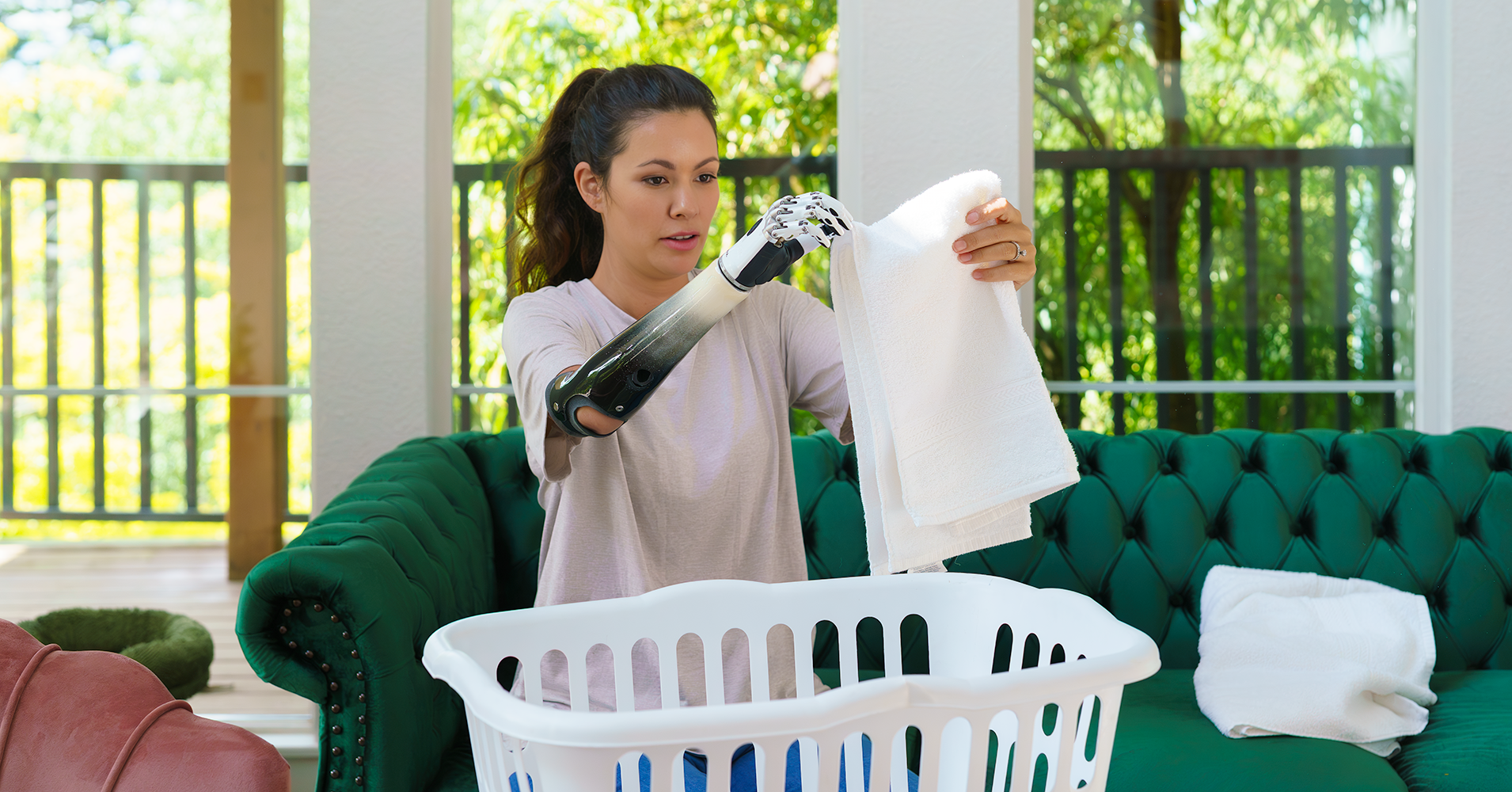It’s the end of a long day, and the last hurdle before you can thankfully crawl into bed is your bathroom routine. Or, it’s the beginning of a fresh new day, and before you can get started, you need to shower and prep for what’s ahead. But which person are you: Do you do these tasks with your prosthetic device? Or without? Or some with and some without? In this article, we’ll tackle some of the most common nighttime and morning routines and how best to navigate them both with and without an upper limb prosthesis.
Please keep in mind that while some of the suggestions below may work for those with a bilateral amputation, you can check out our "Bathroom Hacks for People with a Bilateral Limb Difference" article.
First up, brushing your teeth. If you’ve lost some or all of your dominant hand, you may not have to switch over to the other hand for brushing your teeth. If you want to continue to use your dominate side, you just need to make some adjustments. One option may be to purchase a whole lot of foam grip tubing (see the image at the top). For those with multi-articulating hands, these devices can sometimes have a tough time holding onto small, stick-like objects. They may be able to grasp a larger item, like an electric toothbrush — but then you run into the problem of not being able to hold firmly onto something that is made of plastic, with your metal or plastic hand. A silicone glove may help, but even then you may find that your grip is not sturdy enough, especially for something that is vibrating. If the foam tubing isn’t large enough to wrap around a bulky electric toothbrush, you can always try some Eazyhold Grip Straps. For people with a partial-hand amputation who would rather brush without their prosthesis, a universal cuff may be of help. For those with wrist disarticulations and above, check out how our super-star patient Gerry brushes his teeth in the video below. As for the toothpaste, there are touchless, automatic toothpaste dispensers out there. Lastly, don’t forget to floss! Flossers of any brand are the best option for one-handed flossing (worried about the environment? There are non-plastic flossers — they're made of plant-based materials).
How about washing your face? The only multi-articulating myoelectric hand available that can be exposed to water is the TASKA hand. The ETD is also waterproof, though it isn’t exactly the softest thing to wash your face with. In this case, a nice washcloth and an automatic soap dispenser (pictured at the start of this article) filled with face wash might be the way to go (just be sure to do your research — some soap dispensers clog unless you use their designated soap).
The last routine we’ll tackle in this article is hair styling. After a shower (which we discussed hacks for in our Bathroom Retrofitting blog article), what’s the easiest way to blow dry your hair? Well, for Megan Absten, a U.S. Paralympic track and field athlete, the answer is a blow-drying hairbrush. There are also hairdryer holders out there for anyone who doesn’t want to give up their old appliance. A 1-UP Hair tie can allow the user to put their hair up using one hand. For anyone who uses hair gel, the canister kind with a loosely applied lid sitting atop a piece of Dycem® non-slip material might be the best way to go. Thicker liquids, like gels, can sometimes clog an automatic soap dispenser (link above) but you may be able to find one that works for you.
What bathroom routines would you like some hacks for? Besides an article that focuses on hacks for people with a bilateral amputation, we also have plans to create articles about nail care, shaving and shower hacks. So let us know if there’s more that you’re looking for! Our clinical therapy specialists love a challenge, so please feel free to contact us or comment below.






%20President%20and%20Senior%20Clinical%20Director.jpg?width=600&height=600&name=John%20M.%20Miguelez%2c%20CP%2c%20FAAOP(D)%20President%20and%20Senior%20Clinical%20Director.jpg)










Comments (1)